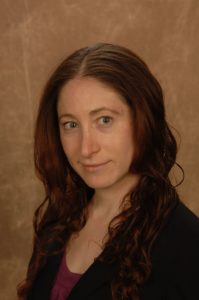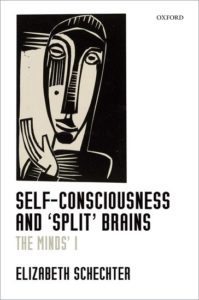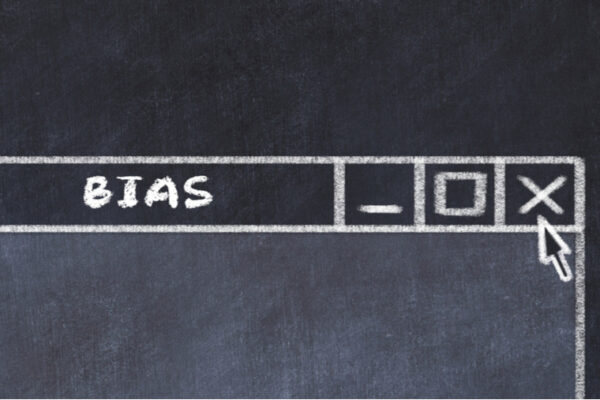Each of them, despite being two thinking things, is one of us — one person.
It is an odd sentence to most, but not to Lizzie Schechter, assistant professor of philosophy and philosophy-neuroscience-psychology, both in Arts & Sciences, at Washington University in St. Louis.
Schechter researches consciousness, the unities and disunities of mind, and personal identity. In her forthcoming book, she considers some of the most intriguing psychology patients to ever have submitted to research, subjects who have had the hemispheres of their brains — and perhaps their minds — severed in two.

In her book “Self-Consciousness and ‘Split’ Brains: The Minds’ I,” which will be published June 1 by Oxford University Press, Schechter asks linguistically simple, but metaphysically puzzling questions: In a single body, how many minds are there? How many people?
In the second half of the 20th century, surgeons performed dozens of operations on people with severe epilepsy to ease the frequency and intensity of seizures. The surgery involved severing a significant part of the corpus callosum, a dense bundle of nerve fibers that connect the left and right hemispheres of the brain, facilitating communication in and integration of the brain in a non-severed brain.
The surgeries were more or less successful, but experiments revealed unusual side effects.
“The two hemispheres begin to operate independently of each other,” Schechter said, “not totally, but to an unusual degree.”
For instance, each hand sends tactile information to the opposite hemisphere; touch something with your left hand, and the information is sent to your right hemisphere, and vice versa. If your corpus callosum is intact, no problem. The information travels through those nerves and is available to both your left and right hemispheres. But odd things happen when that connection is severed.
“Imagine blindfolding a split-brain patient so that they cannot see what you’re putting in their hands,” Schechter said. In their left hand they get a pipe. In the right, a pen. Then ask them what they are holding.
“They’ll say, ‘You gave me a pen in my right hand.’ But if you ask about their left hand, they’ll say, ‘I couldn’t feel it very well.’ Or, ‘My left hand is kind of numb.’” That’s because, Schechter said, in most people, the right hemisphere is “mute” and language is processed in the left hemisphere. Since tactile information is sent from one hand to the opposite hemisphere, the patient cannot voice any information received by the left hand.
“But if you now give the subject a pen and a piece of paper in their left hand and ask again, the person will be able to draw a picture of a pipe. They might even write the word, ‘pipe,’” Schechter said. “They just can’t speak it.
“It’s as though the subject suddenly had two centers, or streams of consciousness, controlling behavior; one associated with each hemisphere,” she said. “One of them can report by writing or drawing a picture that it felt a pipe. The other can report by writing, or drawing, or just speaking, that it felt a pen.
“But it’s as if no one felt both objects.”
In person, Schechter rapidly runs through a half-dozen experiments like this one — some even seem to involve the right hemisphere “cheating,” the left hand tracing an answer on the back of the right hand, for example.
Despite the oft-repeated claim by researchers that, outside of the lab, these subjects are “socially normal,” Schechter questions this claim in her book. A study conducted with six split-brain subjects found that they all struggled with significant and unusual behavioral problems outside of the lab: One hand interfering with the other as a subject tried to dress; subjects so paralyzed with indecision — or was it two minds wrestling with competing intentions? — that even making breakfast took hours.
So is there one mind or two? One person or two? Traditional explanations in philosophy tend to ascribe a 1-to-1 ratio of consciousness to personhood. But in “Self-Consciousness,” Schechter argues for what she calls a “reconciliation account.”
“The impression that a split-brain subject has two minds is correct,” she said. “But so is the impression that a split-brain subject is not just two human beings strapped together. They are one of us in an important, psychological sense: At the end of the day, they each think of themselves as ‘one’ of us, not two beings inhabiting the same body.”
They cannot help but to think this way, she said. They cannot live as two distinct psychological beings.
“If a split-brain subject were going to be distinct persons,” — that is, if each mind belonged to a distinct person — “that would mean that a split-brain subject were two of us. But the way two people can interact and think of themselves is just very different” than the way the two hemispheres can.
“It’s sort of like they are one of us,” Schechter said, “because they are not two of us.”


